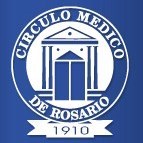Usefulness of procalcitonin as a biomarker in patients with autoimmune diseases and suspected infection
Keywords:
procalcitonin, autoimmune disease, Systemic lupus erythematosus, Infection, Autoimmune disease flareAbstract
Objetives: The objective in this study was to evaluate the usefulness of procalcitonin to distinguish between flare and infection in patients with autoimmune disease. This implies different prognosis, therapy and follow-up.
Patients and methods: All adult patients with autoimmune disease and suspected infection or flare were included prospectively from July 2012 to April 2014. Standard of care, including the determination of procalcitonin, C-reactive protein, erythrocyte sedimentation rate and white blood cells, was performed.
Results: Thirty four clinical cases were analyzed. Mean age 39,2±14 years, 79% women. Prevalent autoimmune disease: Systemic lupus erythematosus (52%).
Groups: infected (n = 15), Flare of the autoimmune disease (n = 15), and indeffinite diagnosis (n = 4). In the flared group, we considered two subgroups: patients with initial suspicion of infection (n = 7), and without initial suspicion of infection (n = 8). In contrast with the other analyzed biomarkers, which did not differ between groups, procalcitonin showed important and significant differences between infected patients and patients with autoimmune disease flare. Procalcitonin also show signifficant differences between infected patients and the subgroups of patients with disease flare. In non-localized bacterial infections, procalcitonin with a cut of 0.25 ng/mL showed: sensitivity 88%, specifficity 94%, positive predictive value 93% and negative predictive value 90%.
Conclusion: PCT was significantly elevated in infected patients, and has good sensitivity, specificity, and predictive values to predict infections in patients with autoimmune diseases, particularly non-localized bacterial infections. It would increase the likelihood diagnosis of infections
Downloads
Published
How to Cite
Issue
Section
License
Copyright (c) 2024 Consiglio Javier, Parodi Roberto Leandro, Demaría Cecilia, Lagrutta Mariana, Balbi Bárbara, Sciarratta Patricia Noemí, Radcliffe Stella Cristina, Greca Alcides Alejandro

This work is licensed under a Creative Commons Attribution-ShareAlike 4.0 International License.
Licencia Atribución-CompartirIgual 4.0 Internacional (CC BY-SA 4.0)
https://creativecommons.org/licenses/by-sa/4.0/deed.es






